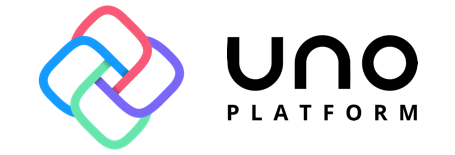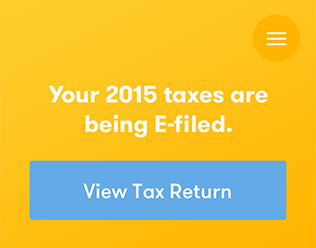our posts tagged “csharp”

With an estimated 3.2 billion smartphone users in 2019, the mobile app
industry is growing and not showing any signs of slowing down. Along
with this growth in smartphone usage comes increased demands and
expectations from end users. Apps need to use the latest smartphone
features, be fast & easy to use. This is further complicated with the
need to develop for both Android and Apple smartphones as well as
tablets. For someone with an app idea, considering all these factors
can be a bit overwhelming. This is where Infinity Interactive steps
in. Infinity has extensive experience in the mobile app arena and can
help you identify the best approach for your app and target audience.
Today, companies are not just restricted to developing a native mobile
app. They can also build mobile web apps, progressive web apps, and
cross-platform apps. This post will cover the pros and cons of each
with the hope of giving a clear path for taking an app idea into app
reality.
…read more
Even on mobile, sometimes you need to show people a PDF. In your Xamarin Android app, for most situations, having the user download the document to view it outside of the app using Android's native document viewer is probably fine. But what if the design specifies displaying the document in the app? And what if that document is 100+ pages long? We recently ran into this here at Infinity Interactive and needless to say, displaying a PDF in your Xamarin Android app is not as straightforward as one might expect.
…read more
In the beginning, there were iOS, Android, and the Web. Entirely separate
platforms that had to be developed as such.
Then, along came Xamarin. Developers could write iOS and Android apps
using a single codebase, but we were still on our own for Web development.
Now, Uno has emerged. Building on top of Xamarin, it gives us the
power to write iOS, Android, Web, and even UWP applications using
shared logic and UI!
…read more
Infinity Interactive is proud to announce that we are officially a
Xamarin Premier Consulting Partner!
…read more
Infinity's own Paul Zolnierczyk attended (and presented at)
MKE DOT NET, a one-day development
conference in the Milwaukee area. MKE DOT NET brings together .NET
developers from the Midwest to explore new ideas, code, share
knowledge and discover best practices. Here’s his recap.
…read more
YAPC::EU recently hosted their annual
Perl Conference in Cluj-Napoca, Romania, and Infinity Interactive is
proud to have partnered with them in releasing the YAPC::EU mobile
application on iOS and Android. Today, we’ll cover some of the
technical challenges we faced in creating this app, which we built on
the foundation of the
Open Source project that
provided a similar app for
Xamarin Evolve 2016.
…read more
We're back with the second part of our post on iOS Animations in
Xamarin. In this post I'm detailing some of the animations seen in
TaxChat,
an iOS App we recently launched. In
the first part
we discussed AnimateNotify, AnimateKeyframes and
AddKeyframeWithRelativeStartTime. In this continuation we will look
at animating rotation and scale using
CGAffineTransform,
then animating a
CAGradientLayer
using
CABasicAnimation.
…read more
We recently launched the app
TaxChat,
"tax preparation for people who have better things to do." The iOS app
saves you from having to do your taxes by yourself; instead you just
answer a few questions, snap a couple of photos and a certified tax
professional will take care of your tax return for you. All through a
beautiful & intuitive interface. You can read more about it at
tax.chat.
Since we built TaxChat using Xamarin, I
figure this is a great time to write a post on iOS animations in
Xamarin and detail some of the animations seen in the app. If you
don't already know about Xamarin, check out this
introduction to Xamarin
by our resident Xamarin MVP, Sean
Sparkman. Essentially, Xamarin allows you to build native apps for
multiple platforms all in C#, which is pretty sweet.
…read more
Nancy is a lightweight framework for building
HTTP-based services on .NET and Mono. The goal of the framework is to
stay out of the way as much as possible and provide a
"super-duper-happy-path"
to all interactions. This approach to sensible defaults and
conventions means that it is very easy to write a stand-alone
self-hosted web site or API that runs as a desktop application. In
this post, I'm going to discuss the equivalent happy-path for
deploying such an application as a Windows Service.
…read more
I want to create a fountain that can entertain guests. Namely, I want
to be able to control the flow of the fountain with my hand. Recently,
at our last summit, Jay Hannah
introduced me to the Leap Motion, which
is basically a Kinect for the hands. A little research introduced me
to Arduino, an open source solution for
programming microcontrollers.
The fountain will be built using base electrical components. The
actual physical basins for the water may be taken from an existing
fountain, but I plan on making that decision later. This post details
my initial goals for the project, as well as the first steps I took
towards a side-project, and the coding hurdles I had to overcome to
complete the side-project.
…read more
Recently, I was working on a team project with a number of independent
components each with their own data, logic, and presentation layer. I
was assigned the task of creating an API for capturing large amounts
of real-time data. Since other developers needed to use it, the API
had to be documented.
Technical writing is probably one of the most difficult things to do.
The intended audience most likely does not want to read it. It needs
to have just enough detail, but it needs to be short. And even if it
does meet all those requirements, people still may not read it.
…read more







